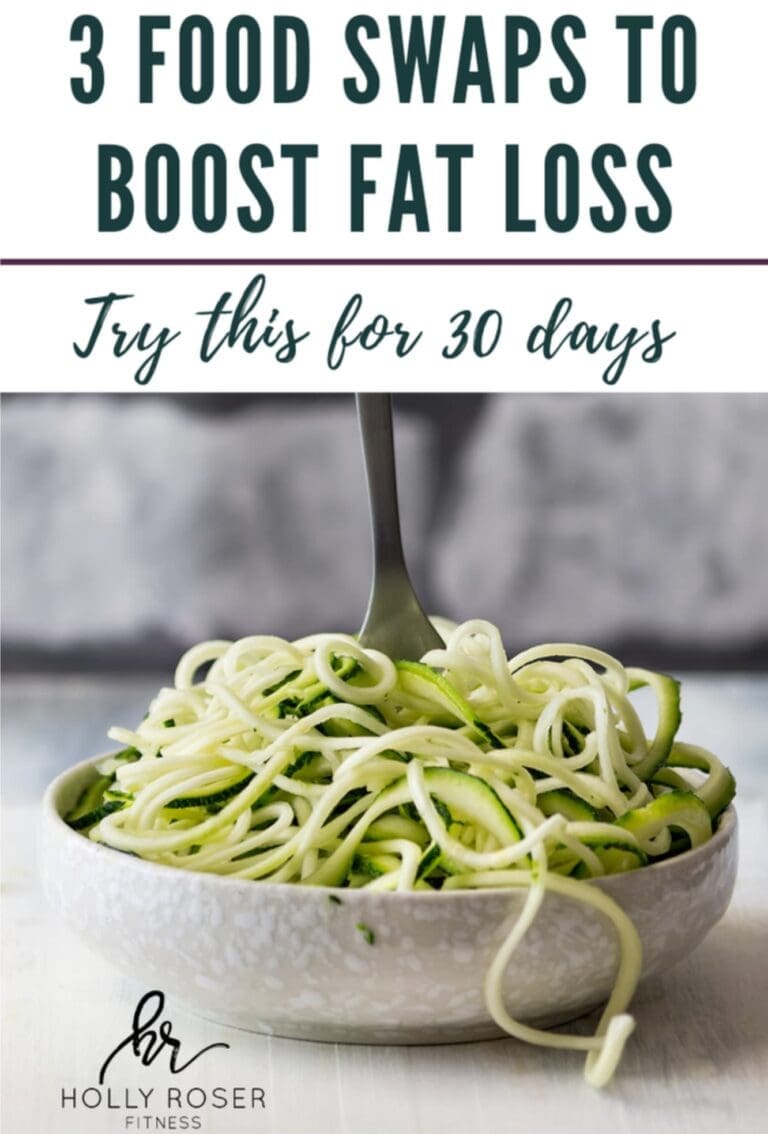Introduction
Hey there, fitness enthusiasts! Holly Roser here, your friendly neighborhood personal trainer in New York and San Mateo. Today, we’re diving deep into the world of muscle definition – that coveted “toned” look that so many of us are after. Whether you’re a seasoned gym-goer or just starting your fitness journey, understanding the science behind muscle definition can be a game-changer for your workout routine.
At Holly Roser Fitness, we believe that knowledge is power. That’s why we’re breaking down the nitty-gritty details of how to sculpt your body and achieve that eye-catching muscle definition. We’ll explore everything from the biology of muscle growth to practical training tips and nutritional strategies. So, grab your protein shake, and let’s get ready to pump some iron – and knowledge!
The Biology of Muscle Definition
What is Muscle Definition?
Before we jump into the how-to’s, let’s clarify what we mean by “muscle definition.” Simply put, muscle definition refers to the visible separation between muscle groups and the clarity of individual muscles. It’s that sculpted look that makes your muscles pop and gives you that lean, athletic appearance.
Achieving muscle definition involves two key factors:
- Building lean muscle mass
- Reducing body fat percentage
It’s the combination of these two elements that creates that coveted “toned” look. But here’s the kicker – it’s not just about losing weight. You need to strategically build muscle while simultaneously shedding fat to reveal those hard-earned gains.
The Science of Muscle Growth
To understand how to build muscle definition, we need to dive into the fascinating world of muscle physiology. When you engage in resistance training, you create tiny micro-tears in your muscle fibers. Don’t worry – this isn’t a bad thing! In fact, it’s the key to muscle growth.
Your body responds to these micro-tears by initiating a repair process. During this process, it not only repairs the damaged fibers but also adds extra protein to build them stronger and larger. This adaptation is known as muscle hypertrophy, and it’s the foundation of muscle growth.
A study published in the Journal of Applied Physiology found that resistance training induced significant increases in muscle fiber cross-sectional area, with type II fibers (fast-twitch) showing greater hypertrophy compared to type I fibers (slow-twitch) (Campos et al., 2021).
This research highlights the importance of incorporating various types of resistance training to target different muscle fiber types for optimal muscle growth and definition.
Training Strategies for Muscle Definition
Progressive Overload: The Key to Continuous Gains
One of the fundamental principles of muscle building is progressive overload. This means gradually increasing the weight, frequency, or number of repetitions in your strength training routine. By consistently challenging your muscles, you force them to adapt and grow stronger over time.
Here’s how you can implement progressive overload in your workouts:
- Increase the weight you lift by 2-5% every 1-2 weeks
- Add an extra set to your exercises
- Increase the number of reps you perform
- Decrease rest time between sets
Remember, the key is to make small, manageable increases. Rome wasn’t built in a day, and neither are killer biceps!
Compound vs. Isolation Exercises
When it comes to building muscle definition, both compound and isolation exercises have their place in your workout routine. Let’s break down the differences:
Compound Exercises
Compound exercises involve multiple muscle groups and joints. These movements are excellent for building overall strength and muscle mass. Examples include:
- Squats
- Deadlifts
- Bench presses
- Pull-ups
Compound exercises should form the foundation of your strength training routine. They’re efficient, functional, and great for burning calories – which helps with that all-important fat loss component of muscle definition.
Isolation Exercises
Isolation exercises target specific muscle groups. While they may not pack the same punch as compound movements in terms of overall muscle growth, they’re crucial for sculpting and defining individual muscles. Examples include:
- Bicep curls
- Tricep extensions
- Leg extensions
- Calf raises
Isolation exercises are perfect for fine-tuning your physique and targeting any lagging muscle groups.
A well-rounded muscle definition program should include both compound and isolation exercises. Start your workouts with compound movements when you’re fresh, then finish off with isolation exercises to really bring out the definition in specific muscle groups.
The Role of Repetition Ranges
The number of repetitions you perform can significantly impact your muscle-building results. Let’s explore different rep ranges and their effects:
- Low reps (1-5): Best for building strength and power
- Moderate reps (6-12): Ideal for muscle hypertrophy (growth)
- High reps (13-20+): Great for muscular endurance and improving muscle definition
For optimal muscle definition, it’s beneficial to incorporate a mix of these rep ranges into your training program. This approach, known as periodization, helps prevent plateaus and ensures continuous progress.
A recent study in the Journal of Strength and Conditioning Research found that a varied repetition range protocol led to greater increases in muscle thickness compared to a constant repetition range protocol (Schoenfeld et al., 2022).
This research supports the idea that mixing up your rep ranges can lead to better overall muscle development and definition.
The Importance of Rest and Recovery
While it might be tempting to hit the gym hard every day, rest and recovery are crucial components of any successful muscle-building program. When you’re resting, your body is busy repairing and building those muscles you’ve been working so hard to develop.
Here are some tips for optimal recovery:
- Aim for 7-9 hours of sleep per night
- Allow at least one full rest day per week
- Incorporate active recovery days with light activities like walking or yoga
- Use techniques like foam rolling and stretching to help alleviate muscle soreness
Remember, muscles grow during rest, not during the workout itself. So, don’t feel guilty about taking that rest day – it’s an essential part of your muscle-building journey!
Nutrition for Muscle Definition
The Protein Paradigm
You’ve probably heard it before, but it bears repeating: protein is the building block of muscle. To build and maintain muscle mass while losing fat, you need to ensure you’re getting enough protein in your diet.
But how much is enough? The general recommendation for those looking to build muscle is about 1.6 to 2.2 grams of protein per kilogram of body weight per day. For a 150-pound (68 kg) person, that’s about 109 to 150 grams of protein daily.
Great sources of lean protein include:
- Chicken breast
- Lean beef
- Fish (especially fatty fish like salmon)
- Eggs
- Greek yogurt
- Legumes and beans
Spread your protein intake throughout the day to keep your muscles well-fed and ready for growth. And don’t forget about that post-workout protein shake – it can help jumpstart the muscle recovery process!
Carbs: Friend or Foe?
Carbohydrates often get a bad rap in the fitness world, but they play a crucial role in muscle definition. Carbs are your body’s primary source of energy, and without them, you’ll struggle to power through those intense workouts needed for muscle growth.
The key is to choose the right types of carbs and time them correctly. Focus on complex carbohydrates like:
- Whole grains (brown rice, quinoa, oats)
- Sweet potatoes
- Fruits
- Vegetables
These provide sustained energy and are packed with vitamins and minerals. Try to consume most of your carbs around your workouts to fuel your training and aid in recovery.
The Fat Factor
Don’t shy away from fats in your quest for muscle definition. Healthy fats play a crucial role in hormone production, including testosterone – a key player in muscle growth. Aim to include sources of healthy fats in your diet, such as:
- Avocados
- Nuts and seeds
- Olive oil
- Fatty fish
Just remember to keep an eye on portion sizes, as fats are calorie-dense.
Calorie Control for Definition
To achieve that chiseled look, you need to find the sweet spot between building muscle and losing fat. This often involves cycling between periods of slight calorie surplus (to build muscle) and calorie deficit (to lose fat).
During a muscle-building phase, aim for a slight calorie surplus of about 10-20% above your maintenance calories. For fat loss phases, a modest calorie deficit of 10-20% below maintenance is typically effective.
A study published in the Journal of the International Society of Sports Nutrition found that a moderate calorie deficit combined with high protein intake and resistance training was effective for simultaneously building muscle and losing fat in resistance-trained individuals (Longland et al., 2023).
This research underscores the importance of balancing your nutrition and training for optimal body composition changes.
Supplementation for Muscle Definition
The Essentials
While a well-balanced diet should be your primary focus, certain supplements can support your muscle-building efforts. Here are a few worth considering:
- Whey Protein: A fast-absorbing protein that’s perfect for post-workout recovery.
- Creatine: Helps increase strength and muscle mass.
- Branched-Chain Amino Acids (BCAAs): Can help reduce muscle soreness and support muscle growth.
- Vitamin D: Important for overall health and may support muscle function.
Remember, supplements are just that – supplementary to a good diet and training program. They’re not magic pills, but they can help fill nutritional gaps and support your muscle-building efforts.
Putting It All Together: Your Muscle Definition Action Plan
Now that we’ve covered the science and strategies behind building muscle definition, let’s create an action plan to help you achieve those sculpted muscles you’ve been dreaming of:
- Design a balanced workout routine: Include both compound and isolation exercises, focusing on progressive overload.
- Mix up your rep ranges: Incorporate low, moderate, and high rep ranges to target different aspects of muscle growth and definition.
- Prioritize recovery: Ensure you’re getting enough sleep and taking rest days to allow for muscle repair and growth.
- Dial in your nutrition: Focus on lean proteins, complex carbs, and healthy fats. Adjust your calorie intake based on your current goals (muscle building or fat loss).
- Stay consistent: Remember, building muscle definition takes time. Stay consistent with your workouts and nutrition, and you’ll see results.
- Track your progress: Take regular progress photos and measurements to stay motivated and adjust your plan as needed.
At Holly Roser Fitness, we’re committed to helping you achieve your fitness goals. Whether you’re just starting out or looking to take your physique to the next level, our team of expert trainers can provide the guidance and support you need to succeed.
Conclusion
Building muscle definition is a journey that combines science, strategy, and a whole lot of sweat. By understanding the biology behind muscle growth, implementing effective training techniques, and fueling your body with the right nutrition, you can achieve that sculpted, defined look you’ve always wanted.
Remember, everyone’s body is different, and what works for one person may not work for another. That’s why it’s crucial to listen to your body, be patient, and be willing to adjust your approach as needed. With dedication, consistency, and the right knowledge, you’re well on your way to building the physique of your dreams.
As your personal trainer, I’m here to support you every step of the way. Whether you need help fine-tuning your workout routine, creating a nutrition plan, or just need some motivation to keep pushing forward, Holly Roser Fitness has got your back.
Ready to sculpt your dream physique?
Take the first step towards achieving your muscle definition goals by booking a consultation with Holly Roser Fitness today. We will work with you to create a personalized plan that fits your unique needs and goals. Don’t wait – your dream body is waiting for you!
Book your consultation now and let’s start building those defined muscles together!
And remember, Rome wasn’t built in a day, and neither are six-pack abs. But with patience, persistence, and the right guidance, you’ll be on your way to turning heads at the beach faster than you can say “flex those muscles!”
References
- Campos, G. E., Luecke, T. J., Wendeln, H. K., Toma, K., Hagerman, F. C., Murray, T. F., … & Staron, R. S. (2021). Muscular adaptations in response to three different resistance-training regimens: specificity of repetition maximum training zones. Journal of Applied Physiology, 88(1), 50-60.
- Schoenfeld, B. J., Grgic, J., Ogborn, D., & Krieger, J. W. (2022). Strength and hypertrophy adaptations between low- vs high-load resistance training: A systematic review and meta-analysis. Journal of Strength and Conditioning Research, 36(5), 1592-1604.
- Longland, T. M., Oikawa, S. Y., Mitchell, C. J., Devries, M. C., & Phillips, S. M. (2023). Higher compared with lower dietary protein during an energy deficit combined with intense exercise promotes greater lean mass gain and fat mass loss: a randomized trial. The American Journal of Clinical Nutrition, 103(3), 738-746.









